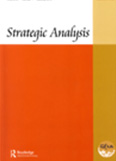India-China Relations: 1947–2000 – A Documentary Study (5 Volumes)
Generations of scholars and analysts working on India-China issues will be grateful to Mr. Avtar Singh Bhasin for the extraordinary service he has done to them by bringing into the public domain, in five volumes, important texts on the subject—over 2,500 of them—including many that are still not declassified by the Ministry of External Affairs and transferred for public access to the National Archives of India. He was able to do so because he got ready access to material classified as ‘secret’ or ‘top secret’ in the papers lying with the Nehru Memorial Museum and Library.
- Jayant Prasad
- July 2019
- Strategic Analysis








